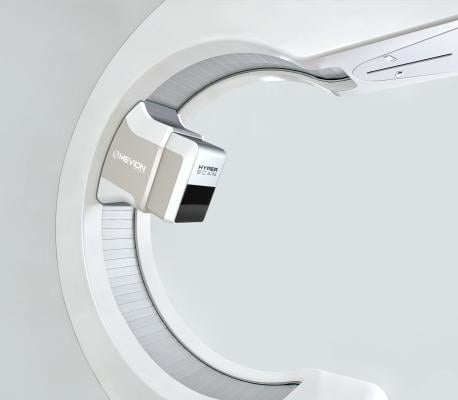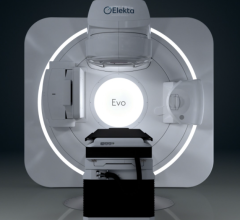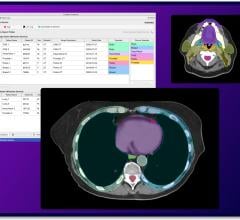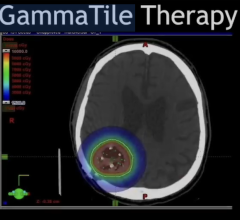
April 27, 2018 — For the first time, cancer patients in the Washington, D.C. metropolitan region have access to proton therapy, now available at the MedStar Georgetown University Hospital Proton Therapy Center.
Martha Ramos, 53 of Maryland became MedStar Georgetown’s first patient to receive proton therapy. Ramos is being treated for recurrence of a brain tumor.
“It’s encouraging to know that this kind of radiation will result in less damage to the healthy area of my brain,” said Ramos.
Proton therapy is more precise and targeted than conventional radiation therapy. It works by using pencil beam scanning, similar to a 3-D printer, to match the tumor’s exact shape and size with superior accuracy that eliminates the exit dose of traditional radiation, and spares healthy tissue.
MedStar Georgetown is the first and only proton center in the world to offer the Mevion S250i with Hyperscan technology, producing beams that are sharper than previous proton systems, according to Mevion. Proton therapy with Hyperscan is also faster than other proton systems, benefiting patients whose treatment includes holding their breath.
“I am extremely excited to be able to offer this latest advancement, proton therapy, to my patients,” said Brian Collins, M.D., a radiation oncologist and clinical director of the new proton therapy center. “It’s clear that this treatment will help to improve the clinical outcomes for our cancer patients and decrease their side effects when radiation is needed.”
“In certain cases, proton therapy can be a game changer,” said Keith Unger, M.D., radiation oncologist at MedStar Georgetown. “It allows us to treat cancers where traditional radiation might not even be possible.”
“Proton therapy is an advanced form of radiation that can destroy cancer cells,” said Peter Ahn, M.D., a radiation oncologist at MedStar Georgetown. “A machine called a cyclotron speeds up protons to two thirds the speed of light and they become highly charged. These high-energy protons are then delivered to the tumor as an invisible beam that eradicates the cancer. Because we can more tightly control the protons than we are able with traditional radiation, proton therapy can be given without damaging critical tissues and structures near the tumor because the beam conforms precisely to the tumor’s size and shape, sparing healthy tissue.”
Hyperscan is a U.S. Food and Drug Administration (FDA)-approved technology that has advantages over existing proton therapy systems. In addition to producing a micro beam that is sharper than many current proton systems and reducing damage to nearby healthy tissue, Hyperscan is also faster than other pencil beam scanning systems, which can reduce the margin of error in treating tumors that are affected by breathing or organ motion. This improves both treatment accuracy and patient comfort as patients need to spend less time lying still.
Proton therapy is beneficial for pediatric cancer patients because it lowers their exposure to radiation avoiding unnecessary exposure to healthy tissue and resulting in less growth impairment as they grow up. Children are less likely to develop a secondary cancer later in life when treated with proton therapy as it treats tumors while keeping health surrounding tissues unharmed.
Proton therapy is also effective in treating recurrent tumors.
“There are also certain types of cancer where you have to deliver a very high dose of radiation right next to a critical structure like the spinal cord or brainstem,” said Sonali Rudra, M.D., radiation oncologist at MedStar Georgetown. “With proton therapy we can deliver a high dose to the area we are trying to target and minimize the radiation beyond the tumor. So for some patients, proton therapy might be their only radiation treatment option.”
“Proton therapy can also be a good option for patients with left-sided breast cancer, which is close to the heart,” said Rudra. “When indicated for breast cancer, using proton therapy instead of traditionalradiation means more control over the radiation itself and less potential damage to the heart and lungs.”
Click here to watch a YouTube video explaining the differences between proton therapy and conventional radiation. Animation courtesy of MedStar Georgetown University Hospital
For more information: www.mevion.com


 May 14, 2024
May 14, 2024 








